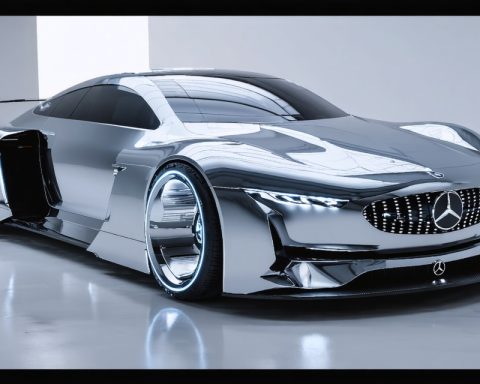- The aviation industry is undergoing a significant transformation towards clean energy, reducing its reliance on fossil fuels.
- Solar-powered flights, such as Solar Impulse 2, showcase the potential of harnessing renewable energy for aviation, achieving global circumnavigation without conventional fuel.
- Airbus aims to introduce hydrogen-powered commercial aircraft by 2035, with hydrogen offering the promise of zero-emission air travel.
- Electric propulsion is advancing with lightweight batteries and electric motors powering smaller aircraft, contributing to quieter and cleaner aviation.
- The shift towards renewable aviation technologies signifies a commitment to sustainability and a new era of environmentally friendly air travel.
Imagine soaring through the skies on a plane powered solely by the gentle caress of the wind and the brilliant rays of the sun. The aviation industry, historically reliant on fossil fuels with their telltale carbon footprints, is witnessing a transformation unlike any other. The quest for cleaner, greener skies is no longer a distant dream but a tangible reality unfolding at breakneck speed.
Air travel revolutionizes our connection to the world, yet it has long stood as a formidable contributor to greenhouse gas emissions. Today, the emergence of clean energy technologies in aviation serves as both a beacon of hope and an engineering marvel.
Solar-Powered Flight: A New Dawn
Solar Impulse 2, the brainchild of Bertrand Piccard and André Borschberg, set a precedent in sustainable aviation by circumnavigating the globe using only solar power. Covering an astounding 26,098 miles without a single drop of conventional fuel, this aircraft heralded a new era in clean aviation. Its journey wasn’t just about breaking records; it illuminated the boundless potential of harnessing renewable energy for flight. Imagine wings gleaming with solar panels, silently slicing through the atmosphere, gathering power from the sun to soar.
Hydrogen-Powered Hope
Airbus, a titan in the aerospace industry, announced visionary plans to introduce a hydrogen-powered commercial aircraft by 2035. Hydrogen, a clean and potent energy carrier, offers the tantalizing possibility of zero-emission air travel. When used as fuel, it combusts to produce only water vapor. Picture this: a pristine blue sky devoid of the contrails of traditional aircraft, a testament to human ingenuity and the relentless pursuit of cleaner technologies. The shift to hydrogen fuels signifies more than environmental stewardship; it embodies a paradigm shift toward a more sustainable future.
A Takeoff into Cleaner Skies
Electric propulsion, another contender in the race to decarbonize aviation, promises a quieter and cleaner journey. Lightweight batteries and electric motors are already powering smaller aircraft, proving essential in regional travel and air taxi services. The gentle hum of electric engines, barely more than a whisper, marks a stark contrast to the roar of current jet engines. Such advances paint a vibrant picture of a future fleet of silent and environmentally friendly planes.
Takeaway
Aviation’s clean energy transformation isn’t just an industry evolution; it’s an unyielding commitment to future generations. The skies are gradually unfurling their welcome to an epoch where flights can be guiltless, guided by renewable energies, and written into the chronicles of achievement alongside sustainability.
These strides in renewable aviation aren’t distant science fiction but achievable milestones, urging us all to imagine flight not as a burden upon the planet, but as a harmonious dance with the elements. As these cleaner technologies take wing, we are invited to not only rethink the way we fly but also to celebrate humanity’s ability to innovate and evolve responsibly. Join in the exhilaration as clean energy technologies take flight and redefine our relationship with the sky.
How the Future of Aviation is Being Redefined by Clean Energy
Exploring the Future of Clean Aviation
The future of aviation is set on a clear path toward sustainability, driven by innovations in solar, hydrogen, and electric power. While the article highlights key advancements, there are more layers to unravel in this groundbreaking shift.
Solar-Powered Aviation: Achievements and Challenges
Achievements:
Solar Impulse 2’s journey around the globe was a monumental feat demonstrating solar power’s potential in aviation. However, it also highlighted the limitations of current solar technology, such as dependency on weather conditions and the extensive wingspan required to accommodate enough solar panels for sustained flight. The aircraft’s success has spurred research into more efficient photovoltaic cells and energy storage solutions that could eventually power larger commercial flights.
Challenges:
The main hurdles include the need for improved solar cell efficiency, lightweight materials, and better energy storage. According to a study published in Nature Communications, advances in perovskite solar cells could offer higher efficiency rates and lower production costs, making solar-powered commercial aviation more feasible in the future.
Hydrogen Fuel: A Game-Changer for Zero-Emissions
Real-World Use Cases:
Airbus’s vision for hydrogen-powered commercial aircraft by 2035 is a testament to the clean energy transition’s potential. With hydrogen fuel cells generating only water vapor and warm air, we’re looking at completely eliminating carbon emissions in flight.
Controversies & Limitations:
However, the production, storage, and transport of hydrogen remain challenges. The International Energy Agency reports that while hydrogen is abundant, most production methods currently rely on fossil fuels, detracting from its overall environmental benefits. Innovations in green hydrogen production, such as electrolysis powered by renewables, are crucial to overcoming these hurdles.
Electric Propulsion: A Quieter, Cleaner Future
Pros & Cons Overview:
Electric propulsion is making strides in regional and air taxi services. The reduced noise and low emissions of electric aircraft, like those being developed by companies such as Eviation, offer clear advantages. Nonetheless, the current limitations in battery capacity and energy density pose significant challenges for long-haul flights.
Insights & Predictions:
Technological advancements in battery technology and materials science are expected to play a crucial role in overcoming these barriers. A report by the Electric Power Research Institute predicts that with continued innovation, we could see viable electric commercial aircraft by mid-century.
Actionable Recommendations
1. Stay Informed: Keep up with developments in clean aviation technologies for insights into travel and investment opportunities.
2. Support Innovation: Advocate for policy support and investment in research and development of renewable energy technologies in aviation.
3. Consider Eco-Friendly Travel: Whenever possible, choose airlines that are investing in sustainable technologies and practices.
For further exploration and detailed updates on the aviation industry’s sustainable transitions, refer to trusted industry sources like International Civil Aviation Organization (ICAO) and Airbus.
By understanding and supporting these emerging technologies, individuals and industries alike can contribute to a future where flight harmonizes with environmental responsibility.














